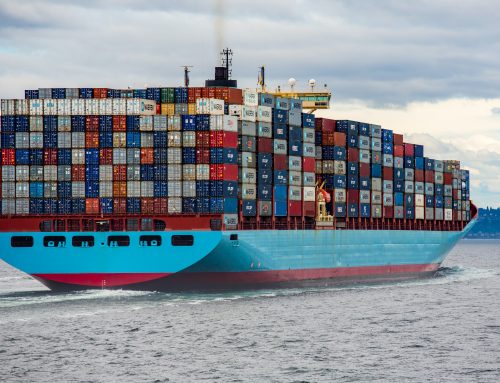The recent closure of the Section 321 loophole for inbound shipments from China has sent shockwaves through the e-commerce industry. Retailers that relied on de minimis entries to bypass duties and streamline imports now face new compliance challenges. However, strategic adjustments, including transitioning to Type 01 formal entries with consolidated invoices, can help mitigate costs and maintain operational efficiency.
In this article, we’ll explore the impact of this change, discuss available options for e-commerce retailers, and outline how our expertise can help businesses develop optimized duty strategies.
Understanding the End of Section 321 for China Imports
Section 321 allowed shipments valued under $800 USD to enter the U.S. duty-free, provided they met de minimis entry requirements. Many e-commerce retailers, particularly those sourcing from China, leveraged this rule to minimize costs.
However, U.S. Customs and Border Protection (CBP) has now restricted de minimis entry eligibility for Chinese-origin goods, closing a significant loophole. This means that all shipments from China, regardless of value, must now be processed as formal entries (Type 01).
For e-commerce retailers, this shift brings several challenges, including:
- Increased duty and tariff exposure, particularly for products subject to Section 301 tariffs.
- Additional compliance requirements, including accurate classification, customs documentation, and valuation reporting.
- Longer processing times, as formal entries require CBP review and clearance.
Transitioning to Type 01 Formal Entries: The Role of Consolidated Invoices
One of the most effective ways to reduce costs and streamline compliance under the new rules is through entry consolidation. Rather than submitting multiple individual entries for each order, retailers can:
- Consolidate invoices for shipments arriving on the same day to the same consignee
- Leverage bulk entry processing, which allows multiple shipments to be filed under a single Type 01 entry
- Optimize duty valuation strategies to ensure accurate yet cost-effective customs declarations.
Benefits of consolidation include:
- Lower brokerage and processing fees per entry.
- Faster clearance times by reducing the number of individual filings.
- Improved customs compliance with structured documentation.
Options for E-Commerce Retailers Moving Forward
With Section 321 no longer an option, e-commerce retailers must reevaluate their import strategies to maintain profitability. Here are the key approaches to consider:
1. Leveraging Duty Mitigation Strategies
Retailers can explore duty engineering, including:
- Tariff classification reviews to ensure products are categorized under the most favorable duty rates.
- First sale rule application, allowing duties to be assessed based on the original manufacturer’s price rather than the final sale price.
- Country of origin optimization, which involves reassessing supply chains to source from duty-favorable countries.
2. Shifting to Section 321-Eligible Third Countries
While Section 321 is restricted for direct shipments from China, some retailers may route shipments through other countries before importation into the U.S. However, this requires:
- Proper documentation to comply with CBP’s substantial transformation rules.
- Clear evidence of manufacturing or value-added processing in the third country to avoid transshipment violations.
3. Bonded Warehousing & Foreign Trade Zones (FTZs)
Retailers shipping in bulk may consider bonded warehouses or FTZs, which offer:
- Duty deferral benefits, allowing goods to be stored without immediate tariff payment.
- Re-export options, if products are later shipped to non-U.S. markets.
- Potential duty reduction, if goods are processed or modified before entering U.S. commerce.
How We Can Help: Custom Duty Strategies & Compliance Support
The transition to Type 01 entries requires careful planning, expert classification, and cost-effective strategies. Our team specializes in:
🔹 Customs Entry Optimization – Helping retailers consolidate invoices and minimize brokerage fees.
🔹 Duty & Tariff Mitigation – Reviewing product classification, exploring duty reductions, and leveraging trade agreements.
🔹 Compliance & Documentation Support – Ensuring smooth transitions to formal entry procedures while avoiding penalties.
🔹 Supply Chain Strategy – Advising on bonded warehouses, FTZs, and alternative sourcing to optimize costs.
The closure of the Section 321 loophole for China shipments is a challenge, but with proactive customs planning, e-commerce businesses can adapt and thrive under the new regulations.
Ready to optimize your customs strategy? Contact us today for expert guidance on navigating the new import landscape.
Disclaimer: The information provided in this blog is for general informational purposes only. It is not intended to constitute legal, financial, or regulatory advice. While we strive to ensure accuracy, we make no representations or warranties regarding the completeness, reliability, or applicability of the information. Readers should consult with a qualified professional or relevant authority before making any business or compliance decisions. We assume no liability for any reliance placed on this content.





